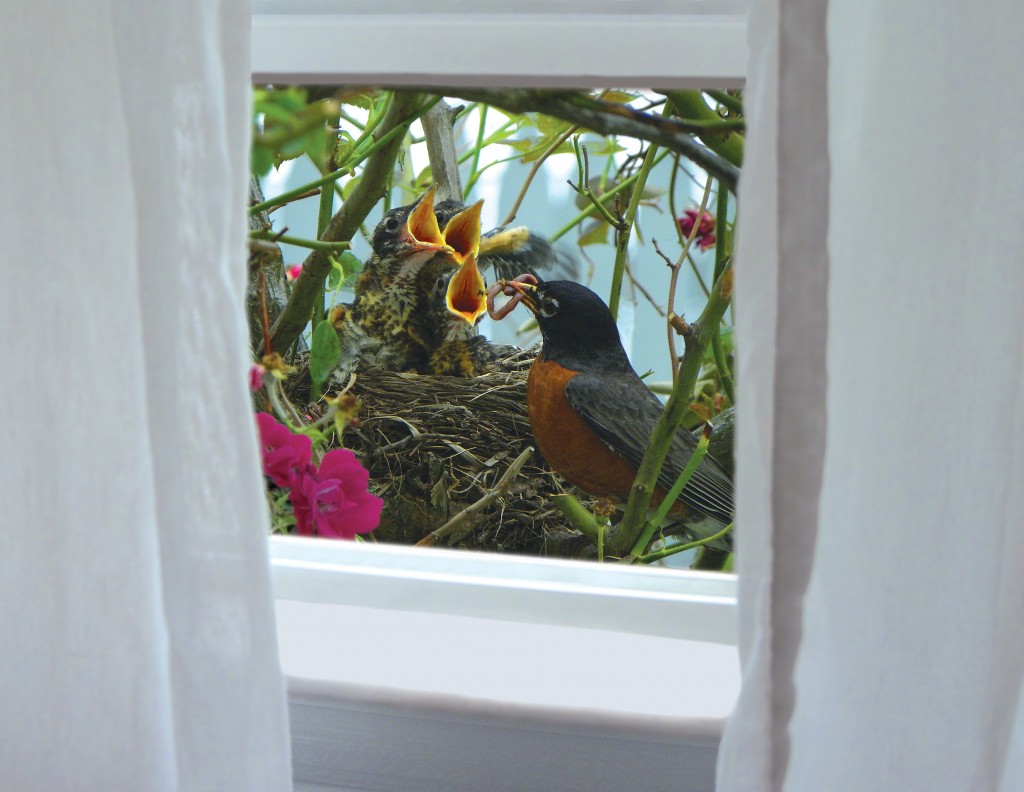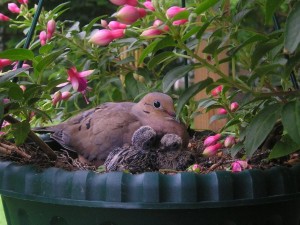 Photo ©
Clifford Rumpf, NJ
Photo ©
Clifford Rumpf, NJ
With the help of our friends and colleagues at the Cornell Lab of Ornithology’s NestWatch project, we’d like to give you useful suggestions on how to approach nests when observing and photographing them:
-
- Nest visits shouldn’t last much longer than 1 minute: Please exercise extreme caution and responsibility when searching for nests to ensure the safety of birds, nests, and nest contents; observations of nests should never jeopardize the well-being of birds!
- Don’t check in the early morning: Most birds lay their eggs in the morning, so plan on visiting nests in the afternoon. Also, most adults will temporarily leave the nest when you are near, and eggs and young nestlings can become cold quickly if left alone in the morning.

-
- Avoid nests during the first few days of incubation: If necessary, observe nests from a distance and approach only when the female leaves the nest.
- Do not approach nests when young are close to fledging: When the young are disturbed during this stage, they may leave the nest prematurely. Young that fledge prematurely usually do not stay in the nest despite attempts to put them back, and their survival rates away from or outside the nest are low. So when young birds are fully feathered and very alert, only observe the nest from a distance.
- Avoid nests during bad weather: If it is cold, damp, or rainy, postpone checking nests until another day. Checking nests during this time can be very stressful for birds.
- Don’t check nests at or after dusk: Females may be returning to the nest for the night, and be alarmed by your presence. The exception to this would be owls, which typically leave the nest at dusk.

-
- Search carefully: It is critically important that we avoid damaging nest sites. Nests that have yet to be discovered are particularly vulnerable. When searching for nests, move slowly through dense foliage, being careful not to dislodge any nests. The nests of ground-nesting birds, such as Killdeer, Ovenbirds, Bobolinks, and many waterbirds, are difficult to see, so tread lightly and be cautious around potential ground-nest sites.
- Be wary of nest predators: Avoid leaving tracks that can direct predators to nests. Nest predators are everywhere—on the ground, in vegetation, and in the air—and many are smart enough to watch you, so be careful that predators such as cats, crows, and jays are not following you! Also try to not damage or trample vegetation that could expose nests.

- Minimize disturbance at the nest: It is important not to startle a bird as you approach the nest; this may cause it to accidentally knock out eggs or young when it flies off. Before approaching the nest, try to see if a parent is sitting on it. Whenever possible, wait a few minutes to see if the bird leaves on its own. If they do, this is the ideal time to check the nest. If a sitting bird does not leave on its own, do not force it off the nest. In this case, you will need to come back later. Remember to keep each visit brief.
- Never handle birds or eggs in the nest: Eggs can be easily cracked or small nestlings injured, and there is no reason to touch these fragile younglings, despite how cute they may look. Small nestlings are remarkably helpless and may not be able to crawl back into the nest cup if displaced, even inside of a nest box. Children observing nests should always be under the supervision of an adult.
- Don’t leave a dead-end trail: If you plan on visiting the nest frequently, try to take a different route away from the nest site than the route you took to reach it. Walking to the nest and back along the same path leaves a dead-end trail that can lead predators directly to the nest.